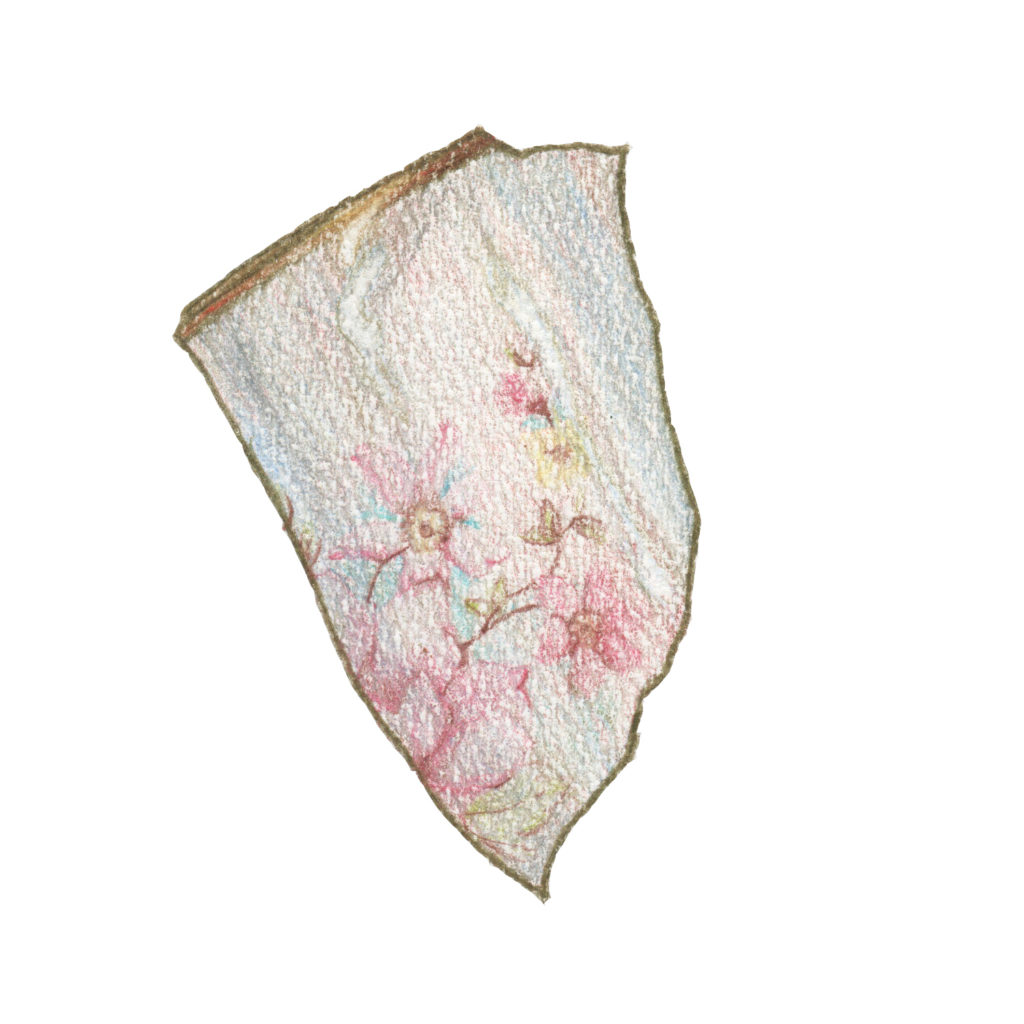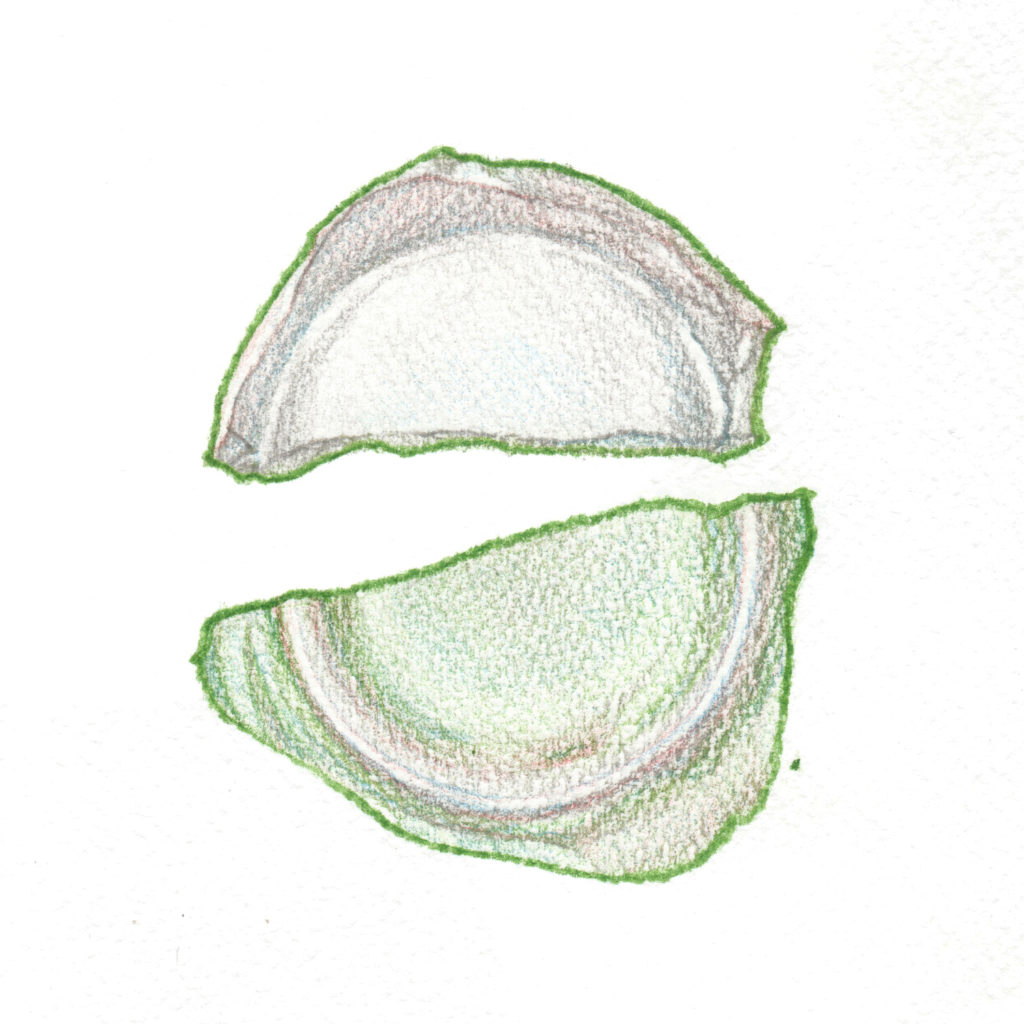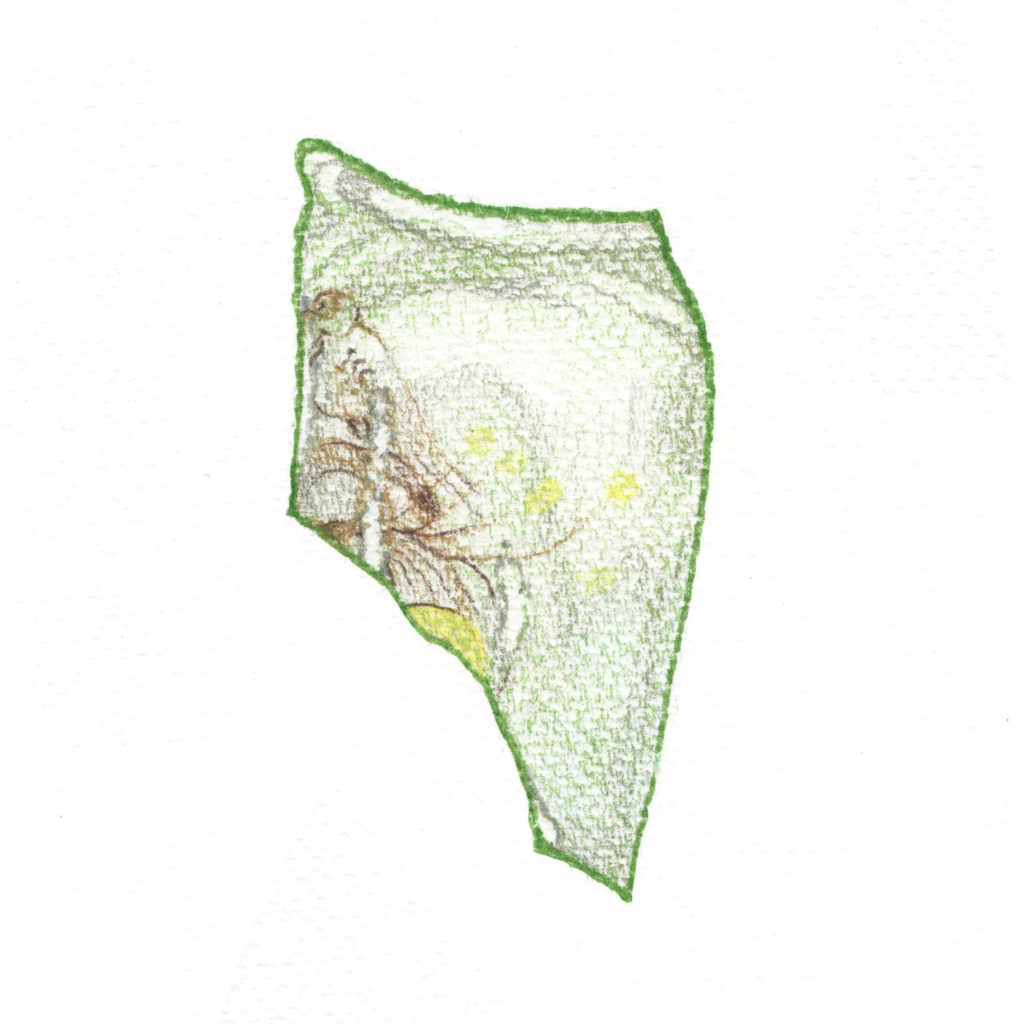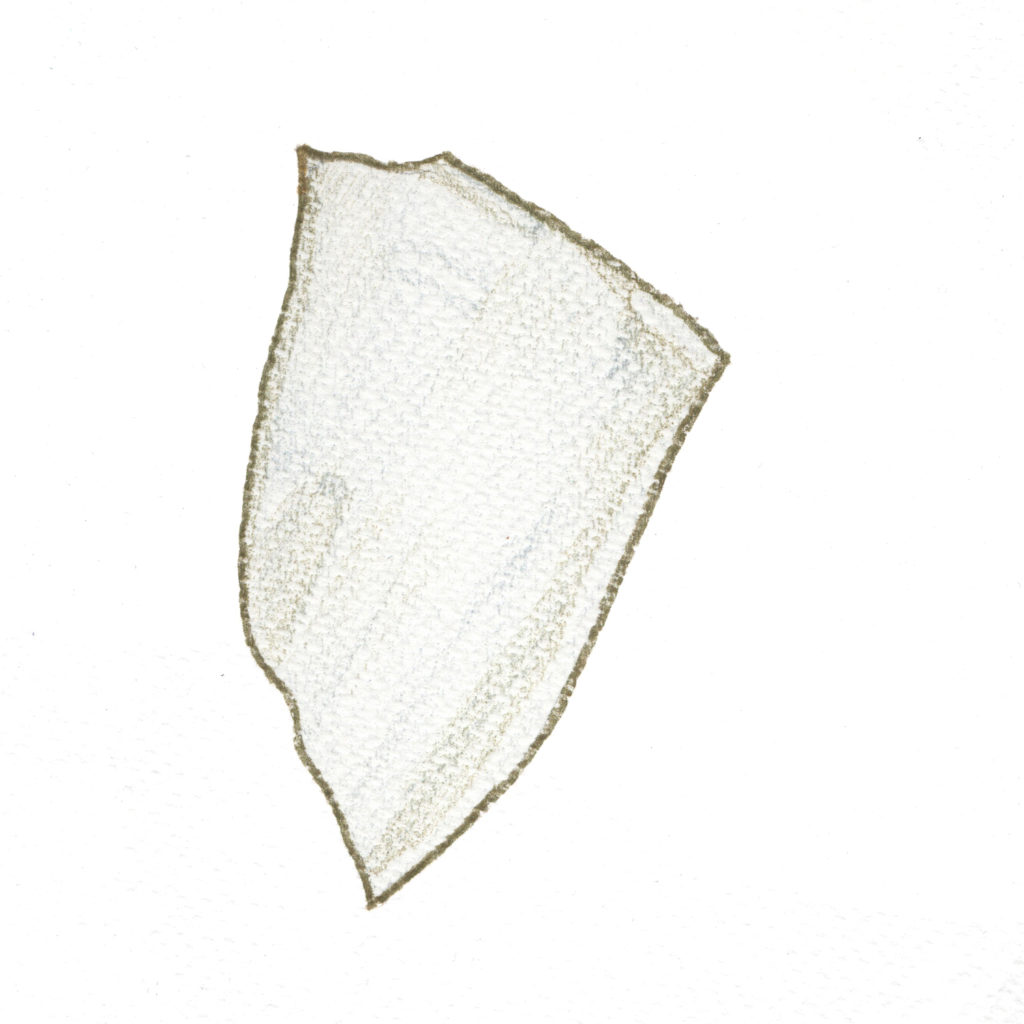Charity Shop Dreams. M. Jacinta Silva Armstrong, London.



For a while I have been meaning to write about the fascination I have for beautiful crockery and china in general (especially although not exclusively Chinese and English), how over time I have collected and treasured a few pieces, and how my heart aches every time a cup breaks. I wanted to write as well about how sometimes I think they have a soul and their leftovers don’t belong in the rubbish bin, about the idea that they are future heritage that I or someone else has been building, and how miserable I felt the day I broke three porcelain pieces in a sole unfortunate clumsy movement.
I don’t really know the reason for this fixation, but it may be related to a nesting instinct; a desire to belong and have a story, or at least incorporate pieces of somebody else’s into one’s own.
Once at the Persa Biobío market in Santiago I found an old black and white photo album. It caught my attention because its content was not, as often, studio portraits – posed and made for posterity – but casual, playful, intimate pictures. The people on it seemed to be a group of siblings or friends. A walk by the Valparaíso port, a trip to the countryside. A woman laughing, half-body dipping in the sea water. Felt my heart ache with the same broken-china-piece pain I described before. I realised those intimate archives had reached the time of being of no significance to anyone alive, ending up for sale on a cloth in the street. After negotiating for a while I got them home with me – apparently the valuable was the album and not the content.
In London, charity shop second-hand bargains are the closest I have seen to those of a Persa market. I like to imagine the former owners that would donate their discarded objects, forming the odd/outdated/with signs of use/sometimes beautiful/sometimes quirky collection that makes me feel like walking into a familiar territory.

When I left Chile something that hurted (apart from leaving behind family and friends) was departing from some objects and furniture I had a special attachment for. I realised some of them had been picked among discarded others every time I moved, joining me from house to house for almost 30 years. That bundle was everything I called home. It was altogether an impossible to store bunch, but passing most of it to people I love helped making my peace with that.
Walls can change, but what makes a new environment familiar are familiar objects. In the two years and 5 months I have been in here, I have already lived in 3 different pre-furnished houses. It took me a year to realise that despite not having a definitive home, it was not necessary to live only with what could fit in a suitcase. It took me two to stop calculating the weight of books before buying – to check if I could take them back with me.
This is not an apology to hoarding or materialism. I don’t plan myself to live held back by an overwhelming backpack of valuables, or stockpile what I don’t really need (or someone else may need). I am just trying to understand what makes a space into a home. In that view, having an attachment to certain objects that contain a story does not mean getting lost in a maze of things, but holding onto a desire of identity. Pre-designed interiors offered by the market are a convenient alternative, which in their descartable nature nevertheless eliminate an opportunity for posterity. I look forward to one day taking back some of my books and pieces of crockery to a charity shop for someone else to appreciate them.

Van Luong (1)
 Kjell Zillen (4)
Kjell Zillen (4) Mels Dees (9)
Mels Dees (9) Gao Yu (4)
Gao Yu (4)Katya Lebedev (1)
Juan Dies (1)
 Anastasia Prahova (2)
Anastasia Prahova (2)Nena Nastasiya (7)
Taarn Scott (6)
 Cynthia Fusillo (20)
Cynthia Fusillo (20)Roberta Orlando (8)
 Nanda Raemansky (25)
Nanda Raemansky (25) Eliane Velozo (22)
Eliane Velozo (22)Leyya Mona Tawil (1)
Julia Dubovyk (2)
Jianglong (2)
 Iara Abreu (23)
Iara Abreu (23) Agathe Simon (1)
Agathe Simon (1)Rosetta Allan (1)
Elizaveta Ostapenko (5)
 Valentin Boiangiu (2)
Valentin Boiangiu (2) Wesley John Fourie (9)
Wesley John Fourie (9) Renato Roque (3)
Renato Roque (3)Rosa Gauditano (5)
Neerajj Mittra (34)
Ciana Fitzgerald (5)
Boris Moz (3)
 Katerina Muravuova (5)
Katerina Muravuova (5)Kyla Bernberg (1)
 Muyuan He (1)
Muyuan He (1)Liza Odinokikh (2)
 Amalia Gil-Merino (2)
Amalia Gil-Merino (2)Paulo Carvalho Ferreira (6)
 Anastasiia Komissarova (2)
Anastasiia Komissarova (2) Yumiko Ono (1)
Yumiko Ono (1) Stefania Smolkina (1)
Stefania Smolkina (1)Lena Adasheva (1)
 Zahar Al-Dabbagh (1)
Zahar Al-Dabbagh (1) Emily Orzech (6)
Emily Orzech (6) Fernanda Olivares (5)
Fernanda Olivares (5) Noor van der Brugge (3)
Noor van der Brugge (3) Ira Papadopoulou (2)
Ira Papadopoulou (2) Tom Chambers (8)
Tom Chambers (8) Titi Gutierrez (3)
Titi Gutierrez (3) Franz Wanner (2)
Franz Wanner (2) Crystal Marshall (6)
Crystal Marshall (6) Transpositions III (36)
Transpositions III (36) Riddhi Patel (3)
Riddhi Patel (3) Michele Kishita (2)
Michele Kishita (2)Damian Carlton (4)
 Deanna Sirlin (1)
Deanna Sirlin (1) Laura Salerno (3)
Laura Salerno (3) Nina Annabelle Märkl (12)
Nina Annabelle Märkl (12) Elina Fattakhova (1)
Elina Fattakhova (1) Tasha Hurley (1)
Tasha Hurley (1) Ian Hartley (2)
Ian Hartley (2) Laurence de Valmy (2)
Laurence de Valmy (2) Ilia Bouslakov (5)
Ilia Bouslakov (5) Andrea Ahuactzin Pintos (4)
Andrea Ahuactzin Pintos (4) Sveta Nosova (3)
Sveta Nosova (3)Carlos Carvalho (1)
 Maria Timofeeva (1)
Maria Timofeeva (1) Jinn Bug (2)
Jinn Bug (2) Johannes Gerard (3)
Johannes Gerard (3)Irène Mélix (1)
 Aba Lluch Dalena (3)
Aba Lluch Dalena (3) Fabian Reimann (1)
Fabian Reimann (1)Natalia Gourova (1)
 Kate Finkelstein (4)
Kate Finkelstein (4)Raina Greifer (1)
James McCann (2)
Naza del Rosal Ortiz (1)
 Jay Critchley Jay Critchley (1)
Jay Critchley Jay Critchley (1) Vicky Clarke (4)
Vicky Clarke (4) Maria Silva (4)
Maria Silva (4) Shir Cohen (5)
Shir Cohen (5) Peter Shenai (4)
Peter Shenai (4) Bo Choy (4)
Bo Choy (4)Alina Orlov (2)
 Olga Popova (3)
Olga Popova (3) Coco Spencer (2)
Coco Spencer (2) Filippo Fabbri (2)
Filippo Fabbri (2)Daniele Leonardo (5)
 SISTERS HOPE (1)
SISTERS HOPE (1) Scenocosme : Gregory Lasserre & Anais met den Ancxt (4)
Scenocosme : Gregory Lasserre & Anais met den Ancxt (4) Anne Fehres & Luke Conroy (6)
Anne Fehres & Luke Conroy (6) Olesya Ilenok (2)
Olesya Ilenok (2) Marie-Eve Levasseur (4)
Marie-Eve Levasseur (4) Natalia Tikhonova (2)
Natalia Tikhonova (2)Ildar Iakubov (1)
 Evgeniy Lukuta (7)
Evgeniy Lukuta (7) Jarkko Räsänen (5)
Jarkko Räsänen (5)Maria Guta (6)
Egle Kulbokaite Dorota Gaweda (6)
Thomas Kotik (1)
 Andrea Stanislav (3)
Andrea Stanislav (3)Ludmila Belova (1)
Alena Levina (1)
 Ilia Symphocat (2)
Ilia Symphocat (2)Yevgeniy Fiks (1)
Star Smart(Formerly Trauth) (18)
Jyoti Arvey (1)
Les Joynes (2)
 Ekaterina Ivanova (1)
Ekaterina Ivanova (1) Lev Shusharichev (1)
Lev Shusharichev (1)Michael Stebackov (5)
Ryan Griffith (3)
Lidia Gordeenko (3)
 Masha Danilovskaya (3)
Masha Danilovskaya (3)Alexander Nikolsky (1)

